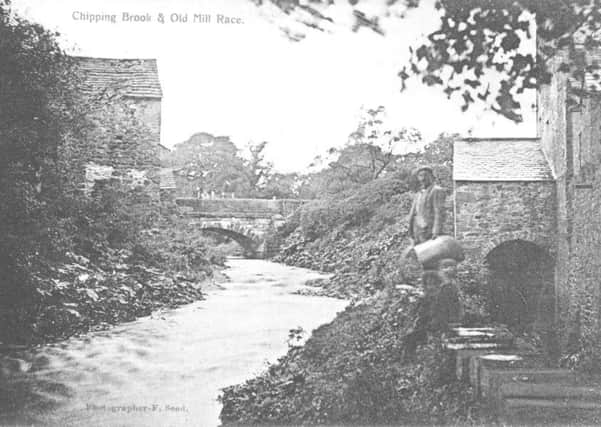Looking back at Lancashire: When water was turned off down at mill


At the time, the inhabitants of the hall would only themselves be tenants of the Warren family, Lords of the Manor, but who had properties elsewhere.
In 1668 Sir Edward Warren was Lord of the Manor, followed in 1687 by his son, Sir John. By the 19th century the Jackson family lived at Woodplumpton Hall, but the last of the Jacksons, Ann, died in 1859. The 1861 census suggests the Hall was falling into disrepair as Thomas Waring, an agricultural labourer, lived there and not any yeoman farmer.
Advertisement
Hide AdAdvertisement
Hide AdA leasing arrangement for a tenancy on the Warren estate to Thomas Hudson, dated 1761, contains the following, indicating how both Hollowforth and Woodplumpton mills were used, though sadly it does not contain any useful description of the mill itself. The document was granting “customary suit” to Thomas Hudson and his heirs:
“Yielding and doing therefore the usual and customary suit of Mill at and to the waterway mills of him, the said George Warren in Woodplumpton aforesaid or in Hollowforth in the said county or one of them on paying the usual mill boon in lieu thereof during the continuance of two several indentures of lease, one of them being dated the seventeenth day of August in the year of our Lord one thousand seven hundred and sixty-one.”
So if you leased some part of the Warren estate you paid the miller a “mill boon,” presumably either money or a portion of the corn he ground for you, or turf for the mill kiln – he had to grind your corn.
That was your right and written in your contract. The late 18th century turf list for Hollowforth Mill still exists (thanks to Wyre Archaeology’s research).
Advertisement
Hide AdAdvertisement
Hide AdWoodplumpton was divided into four quarters, Woodplumpton, Catforth, Eaves and Bartle for census and some administrative purposes, and on the list there were fewer for “Plumpton Quarter” possibly because the inhabitants of there and Bartle were mostly served by Woodplumpton Mill.
The heading shows those tenants who “lead boon turf,” presumably provide turf to fire the drying kiln. There are no pictures of either of the two Woodplumpton mills available, though the maps of the area from the 18th century show a mill over Woodplumpton Brook, a cottage, and possibly some stables.
Besides the miller, there would have been a “dryster,” a person in charge of drying the grain in a kiln, often a young boy learning the miller’s trade. In 1728 William Billington was recorded as the dryster at Plumpton Mill.
Woodplumpton Mill is commonly remembered as the Bone Mill. In the over-crowding survey of 1936-8, Bone Mill Cottage was inhabited by W Helm. The cottage was surveyed on September 17, 1938, and written across the sheet is the word “Condemned.”
Advertisement
Hide AdAdvertisement
Hide AdThe September 1939 Register, information collected to create identity cards for the war and to help with ration books, conscription etc., has William and his wife Florence there, but not long after the cottage was demolished. The mill itself ceased to function as a corn mill sometime in the first half of the 19th century, perhaps because Hollowforth Mill took most of its custom, but it gained a new lease of life in 1848 when the owner, Richard Jackson, invested in the mill’s conversion from grinding corn to grinding bones for fertiliser.
Preston was expanding as a market, tile drainage was turning formerly unusable moss into usable agricultural land, so fertiliser would have seemed a good investment and the associated smells would have been offensive to fewer in this relatively remote area. A Preston engineer, Joseph Clayton, was engaged to design and make the machinery.
All that remains today are few overgrown stones around Woodplumpton Brook, a faint echo of what must once have been a thriving business and a village meeting and gossip place.
The current landowners, though, are gradually clearing away some of the undergrowth and the debris and so possibly there is more yet to be learned.
l With thanks to Peter Sheppard, the Dransfield family, Lancashire and Cheshire Archives, and Wyre Archaeology. To read last week’s story log on to www.lep.co.uk/nostalgia